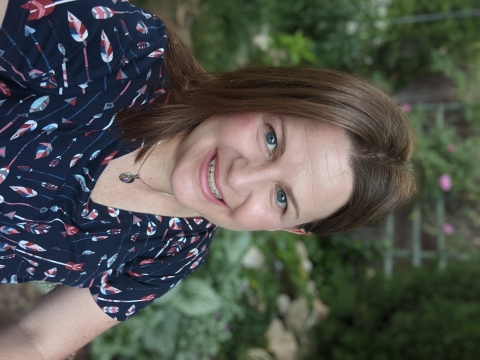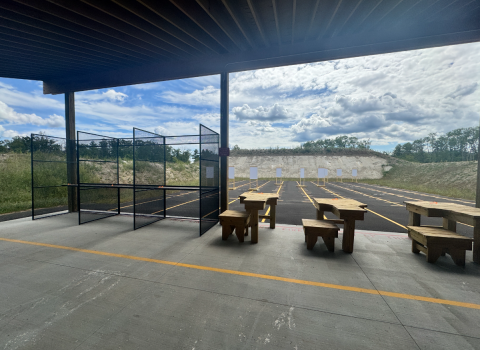This blog can also be heard as a podcast. The podcast can be heard on YouTube with closed captioning.
Brenda Beckley builds community.
Beckley, the hunter and angler recruitment manager for the Idaho Department of Fish and Game, organizes bow hunter and trapper education programs and outdoors skill courses, and manages the Idaho Shooting Range grant program. But these classes and programs are more than just skill-building. They’re opportunities for people to meet each other and connect over common interests. It’s important to Beckley, Fish and Game, and its partners that these initiatives are available to every member of the public, regardless of ability.
Fish and Game receives funding through the Service’s Wildlife and Sport Fish Restoration (WSFR) Program to build and improve shooting ranges in order to provide a safe place to learn and practice marksmanship.
This is one of the types of projects states use WSFR funds for. State wildlife agencies dedicate the money to fish and wildlife management, scientific research, habitat restoration and protection, land and water rights acquisition, and hunting and boating access.
The WSFR money comes from excise taxes that hunters, anglers, boaters, and those industries pay on equipment and boating fuel. These improvements then are not infrastructure projects we helped finance. They are ones we strongly support.
Idaho Fish and Game is focusing on making shooting ranges compliant with the Americans with Disabilities Act (ADA). These projects ensure that shooting ranges include features such as wheelchair-accessible shooting lanes, parking lots with designated accessible parking spots, and bathroom facilities accessible to everyone.
“We’ve done various projects for ADA accessibility,” Beckley says. “Some of our projects are smaller where we make sure that there is a parking lane for our customers to park close to the range and… a flat surface where they can use a wheelchair or perhaps crutches to get to their shooting lane. We also have walkways that we put in to help disabled marksmen move between the different range areas, such as moving from a pistol range to a shotgun range when in a wheelchair.”
Beckley adds that Fish and Game has also built smaller buildings at public ranges that can be used as clubhouses or classrooms. The combination of upgrades to existing shooting ranges and new construction projects helps make these spaces feel welcoming and safe.
One of the goals of Idaho’s Citizen Shooting Range Advisory Committee is to recruit people to recreational shooting sports with all different kinds of abilities. Safety signs along the roads, improving berms and backstops, and even installing cellphone towers and repeaters in case of an emergency are just a few of the projects Fish and Game has taken on. All these projects help make shooting sports and skill-building at shooting ranges accessible in Idaho.
But accessible shooting ranges do more than just expand the reach of people who can recreate and grow their skills. They also grow the community. And growing community is what Beckley does.
“Public shooting ranges are an important place for the community to go and shoot,” Beckley says. “This is where we see people practicing their skills, learning how to shoot new firearms, and learning safety techniques from the range officers. When you provide additional benefits to the range like overhead protection from weather to ADA-accessibility parking lanes, walkways, and bathrooms with running water, you’re going to attract a lot more people, and it builds that community. We have people that come to our public ranges in Idaho on a regular basis. It really is a community.”




